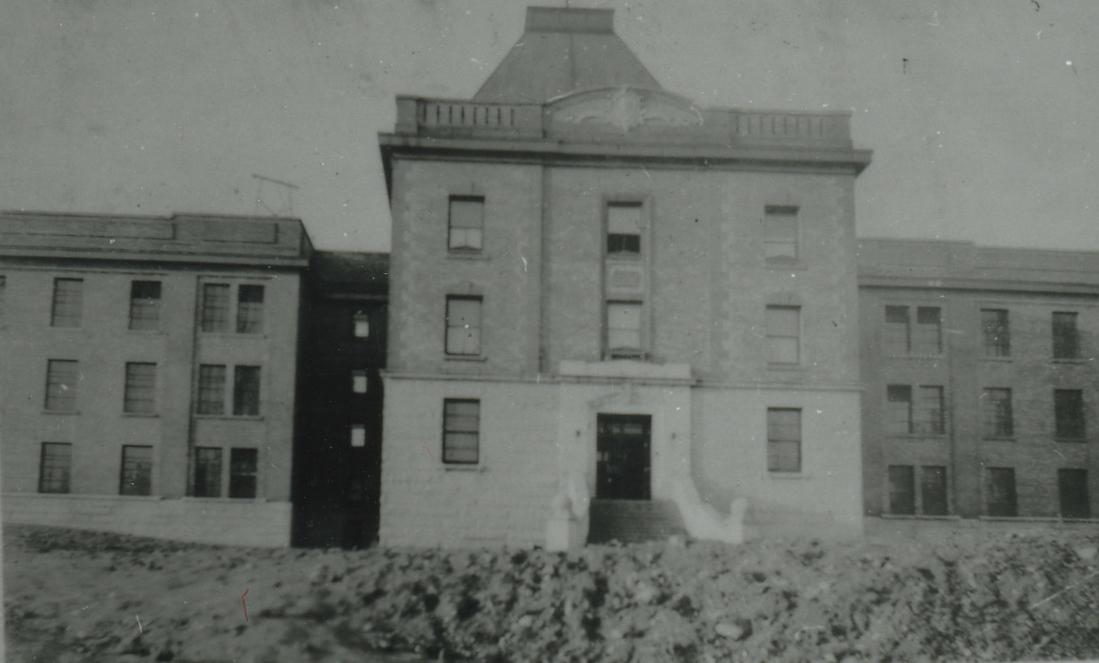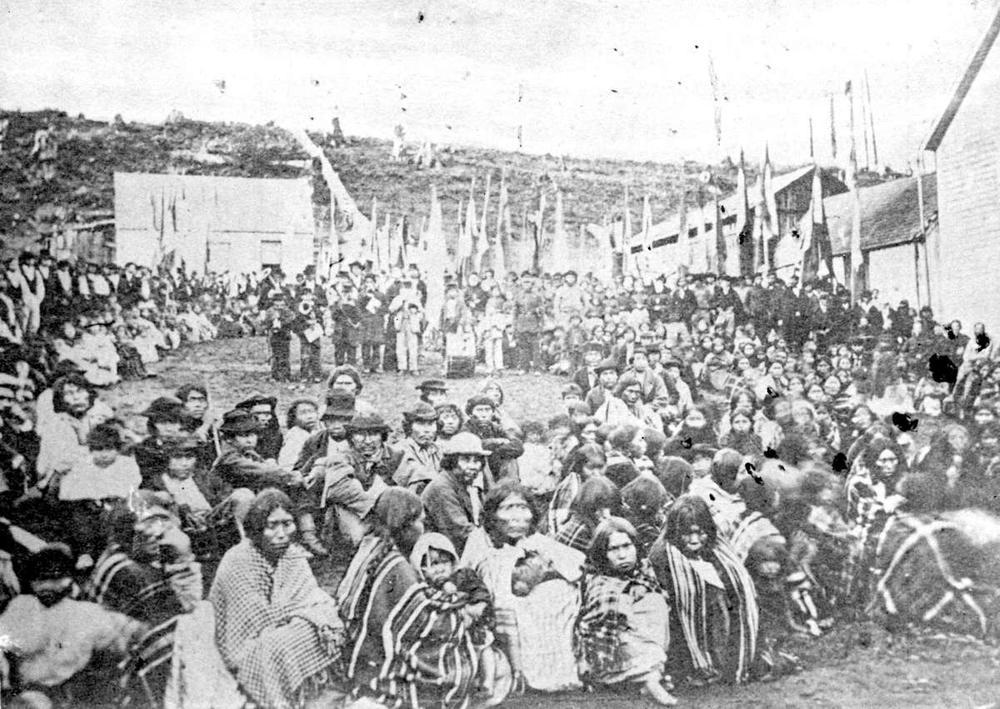Potlatch Ban Introduced
Federal government amends Indian Act, forbidding an important Indigenous practice
Date: 1884
From time immemorial, the potlatch lay at the centre of Indigenous society in the Pacific Northwest. There was abundant gift-giving of goods such as blankets, canoes, and clothing, befitting the name ‘potlatch,’ which means “to give away.” But there was much more to it than that. Births, weddings, and the bestowing of significant titles or rights were also recognized in the ceremony, a quasi town hall. A sense of communion, some unified understanding of the world, was cultivated over the warmth of multi-course feasts.
It completely confounded the British, who began settling the region in the early 1800s. The unfamiliar practices and the distribution of goods were viewed as antithetical to Christianity and capital accumulation, the bastions of white settler society. Missionaries, in particular, singled out the potlatch as the greatest barrier to their proselytizing efforts. Unable to convince the different nations to abandon the practice, these men of God petitioned the Canadian government to intervene. And, in 1885, the potlatch ban was added to the Indian Act: “Every Indian or other person who engages in or assists in celebrating the Indian Festival known as the ‘potlatch,’ is guilty of a misdemeanour, and liable to imprisonment for a term of not more than six nor less than two months.”
And yet, even the wording of the law belied the complete ignorance white Canadians had of the custom. No one had even bothered to define what constituted a potlatch. In 1889, Judge Matthew Begbie completely dismissed one charge of violating the ban for this very reason. “It is by no means clear that it was fully explained to the defendant what the Statute forbids,” he reasoned. “It would seem that the Statute should set out what acts constitute the forbidden festival. Until a defendant knows what these forbidden Acts are, how can he say whether he has committed them or not?” He added, “I think that these considerations show that there would be some difficulty in convicting at all under the statute.”
This advice would be enthusiastically heeded a few years later. In an 1895 amendment, the federal government characterized a potlatch as “an Indian festival, dance or ceremony of which the giving away or paying back of money, goods or articles takes place,” or “any celebration or dance of which the wounding of or mutilation of the dead or living body of any human being or animal forms a part or is a feature.” Now, the wording was both specific and broad enough that nearly anything could qualify as a potlatch, including a Christmas dinner held on a reserve.
Nevertheless, government officials remained frustrated. The goal of the Indian Act had been, as Prime Minister John A. Macdonald put it, “to do away with the tribal system and assimilate the Indian people in all respects with the other inhabitants of the dominion as speedily as they are fit to change.” In this respect, the ban had failed. First Nations had clung to their independence and culture as much as they could. Later, harsher amendments would outlaw traditional dress and dance.
For years, the potlatch went underground, kept alive by First Nations from the coast to the Interior. By the mid-20th century, many white Canadians assumed the practice had died out. In 1951, Canada finally removed the ban. The first legal potlatch was held the following year in Victoria, hosted by Kwakwaka’wakw Chief Mungo Martin, a renowned carver and authority on Kwakiutl culture. It was a bittersweet moment, both a victory and a recognition of what Indigenous communities had lost in the seven long decades the ban had been in place. In the following decades, the Pacific Northwest would see a potlatch renaissance as a new generation embraced what they had previously been denied.
Sources:
1. Francis, Daniel. Banning the Potlatch in Canada. The Canadian Encyclopedia, 18 Apr. 2013, www.thecanadianencyclopedia.ca/en/article/potlatch-to-give-feature.
2. The History of the Potlatch Collection. U'mista Cultural Society, www.umista.ca/pages/collection-history.
3. Loo, Tina. “Dan Cranmer's Potlatch: Law as Coercion, Symbol, and Rhetoric in British Columbia, 1884–1951.” Canadian Historical Review, University of Toronto Press, 1992, www.utpjournals.press/doi/abs/10.3138/CHR-073-02-01.
4. “The Potlatch Ban.” The Bill Reid Centre, Simon Fraser University, www.sfu.ca/brc/online_exhibits/masks-2-0/the-potlatch-ban.html.
5. Potlatch Ban: Abolishment of First Nations Ceremonies. Indigenous Corporate Training Inc., 16 Oct. 2012, www.ictinc.ca/the-potlatch-ban-abolishment-of-first-nations-ceremonies.




![A display of articles to be given away at a potlatch, Alert Bay, BC. [Kwakwa̱ka̱ʼwakw]](https://bc-timeline-backend.azureedge.net/sites/default/files/styles/gallery_resized/public/images/h-03976.jpg)
![A collection of potlatch dancing masks. Photo taken at Alert Bay, BC, Anglican Church parish hall. [Kwakwa̱ka̱ʼwakw]](https://bc-timeline-backend.azureedge.net/sites/default/files/styles/gallery_resized/public/images/h-03995_141.jpg)

